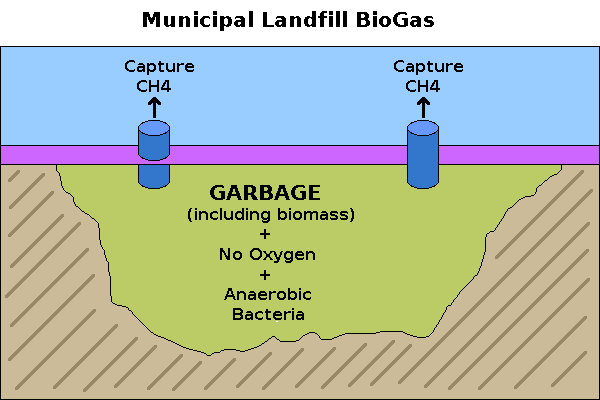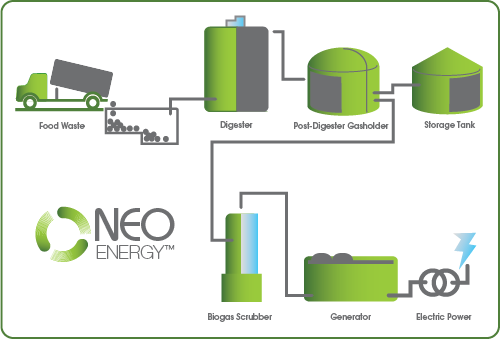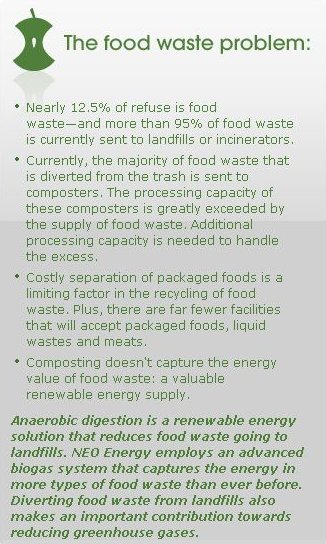[Click for a larger view] |
Biogas Biogas refers to a gas typically made in during the decomposition of organic matter in the absence of oxygen. Biogas can be made from biomass, manure, sewage, municipal waste (garbage), green waste, plant material, and energy crops. Biogas is composed primarily of methane and carbon dioxide, two major greenhouse gases. Biogas can be used as a low-cost fuel, typically for electrical purposes. However, it can also be compressed into biomethane and used as fuel. [14.10] According to Claverton Energy Research Group, "It is estimated that potentially 17% of present UK fuel consumption could come from bio-methane from presently discarded food and animal wastes." [14.11] The ProcessThere are two ways to obtain biogas: the natural way and the anaerobic way. 1) Biogas from Landfills [14.12] Biogas is produced naturally in landfills. As new waste is piled on top of older waste, pressure builds up from the weight of the waste. This pressure compresses the waste and starves it of oxygen. Anaerobic bacteria thrive in conditions such as this. The Anaerobic bacteria breaks down the organic compounds. The three main by-products include methane, carbon dioxide and nitrogen. Before these gases can rise to the surface and escape into the atmosphere, they are captured to be refined into biogas. [14.13] 2) Biogas through Anaerobic Digestion  [14.14]
The BenefitsWhen organic material is left to decompose, major greenhouse gases are released into the atmosphere, but by capturing these harmful gases to make biogas, greenhouse gas emissions are significantly reduced. [14.17]  [14.16] Other benefits include:
Home | Biofuels and Bioenergy | Innovators | Issues | Impacts | About Us | Citations |

